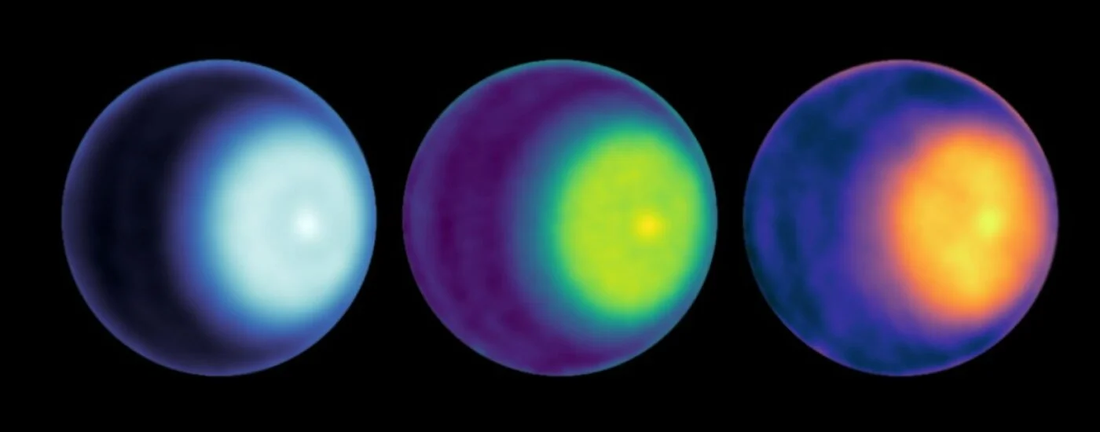
Scientists capture "unprecedented" Uranus vortex
Share
Uranus, the seventh planet from the Sun, never ceases to captivate astronomers and scientists alike. With its peculiar characteristic of rotating on its side, this giant icy planet holds many secrets waiting to be unraveled. In a recent breakthrough, scientists have delved deep into Uranus, shedding light on its enigmatic nature by uncovering evidence of a vigorously swirling cyclone at its north pole.

According to NASA radio astronomer Alex Akins, these fascinating observations provide valuable insights into the true nature of Uranus. "It isn't just a plain blue ball of gas. There's a lot happening under the hood," Akins remarked, emphasizing the dynamic nature of this distant world. The findings highlight that all planets in our solar system with an atmosphere share a common trait: the presence of vortexes swirling around their poles. On Earth, the northern polar vortex is notorious for triggering severe winter events, bringing extreme cold to regions such as the United States and Europe.
The discovery of a spinning cyclone on Uranus became possible through repeated observations of the planet's cloud tops. Astronomers employed the use of radio telescopes, specifically the renowned Very Large Array in New Mexico (famous for its appearance in the movie Contact), to peer into the depths of Uranus' high atmosphere. Unlike visible light telescopes like the Hubble, radio telescopes detect a different type of light, allowing scientists to discern the swirling air beneath Uranus' shroud. The researchers successfully identified the distinct warmer and drier cyclonic winds characteristic of the cyclone.
Despite being a part of our solar system, Uranus remains shrouded in mystery, situated a staggering 1.8 billion miles away from Earth. "The fact that we're still discovering such fundamental aspects of Uranus' atmosphere fills me with excitement to uncover more about this mysterious planet," expressed NASA's Alex Akins, reflecting the collective enthusiasm shared by scientists and space enthusiasts.

Infrared images of Uranus show a thick, tempestuous atmosphere with winds blowing at a clip of 900 km/h and temperatures in the -220 C (-360 degree F) range. Credit: NASA/ESA/L. A. Sromovsky/P. M. Fry/H. B. Hammel/I. de Pater/K. A. Rages
The revelations surrounding Uranus and its swirling cyclone serve as a reminder of the vast and awe-inspiring complexity of our universe. As our exploration and understanding of distant celestial bodies continue to expand, the allure of Uranus only intensifies. The quest to uncover its secrets fuels the curiosity and dedication of scientists, as they strive to decipher the mysteries that lie hidden within this distant ice giant.
You’ve come this far…
Why not venture a little further into A.S.S. - our exclusive Australian Space Society.
And keep thrusting Australia into the deep unknown…
#Space_Aus




